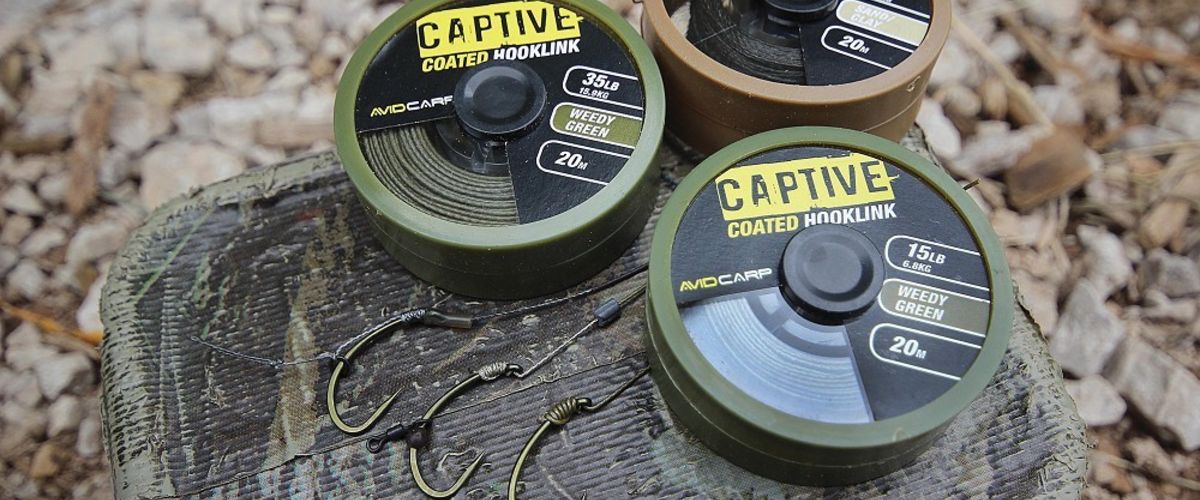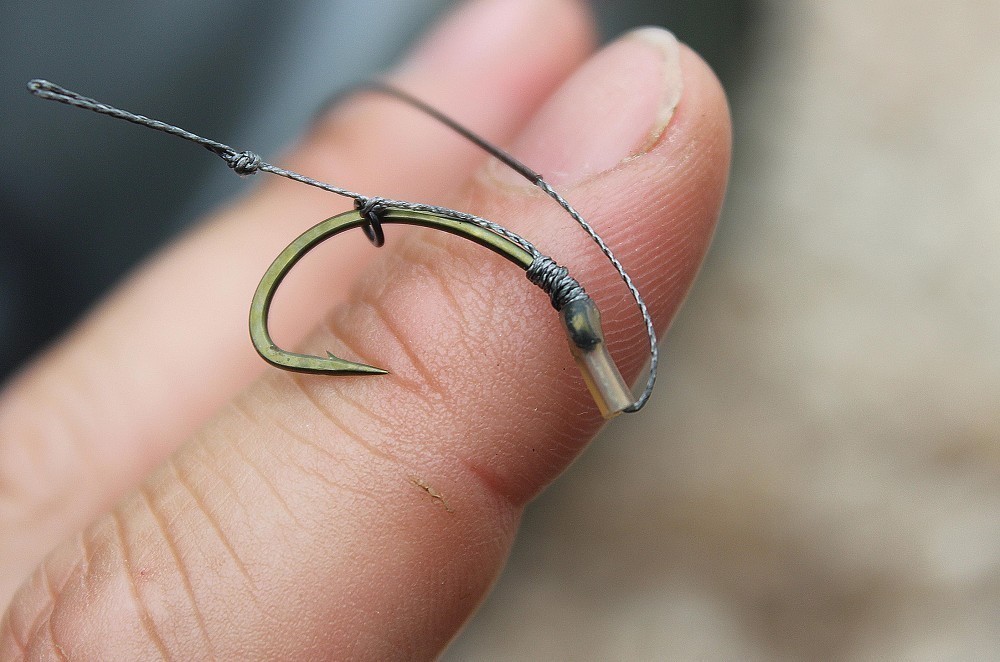
The little things in life...
Avid Carp's Mat Woods takes a closer look at the Blowback Rig...
n angler at one end and a sharp hook at the other.” The wise and immortal words of carp fishing authority Keith Jenkins. He’s right, too, but I think that premise extends a little further than his initial premise might suggest. Indeed, I would argue that it’s the last couple of inches that make the difference when it comes to the efficiency of our rigs, rather than a super sharp hook taking all the credit.
It’s the little tweaks and adjustments that make a huge difference when it comes to how our rigs behave underwater. Take the humble blowback rig. Tied in coated braid, it’s the staple diet of most angler’s rig boards. Why? Because it works! The original principles of Kevin Nash have been somewhat watered down over time and I bet even Kevin uses a slightly different version of the rig these days. And why not? Carp fishing is all about putting the pieces of the jigsaw puzzle together and if changing from a 2mm rig ring to a micro swivel starts catching you more fish, you need to take notice.
I’ve used variations on the blowback theme for many years and for, I suppose a decade or so, I have stuck to only two hook patterns for the task. For the purpose of this article, I will stick with a curve shank pattern, as the long shank idea is another article for another day.
Today, I use the brilliant Avid Carp CRV hook. It’s strong, has an aggressive curve and I have yet to lose a single carp since I began using them. I began using them with a simple rig ring or piece of silicone on the shank, tied with a standard Hair in the peeled back section of coated braid. Really basic stuff and a rig that works all over the place whether used with a bottom bait, wafter or pop-up.
I noticed on a couple of pressured day ticket venues that I would sometimes reel the rig in with the ring or silicone ‘blown’ down the Hair, like it had been rejected. This left the rig sitting at a weird angle, especially with a pop-up, so I looked at something that might ‘reset’ should this happen. I switched to the little Avid Hookbeads and Big Eye Hook Swivels, which look super neat on the hook. The problem ceased and I really don’t think you can beat that arrangement. I use it with and without a bit of silicone or shrink tube kicker over the eye. These elements extend the hook, obviously, and are things I add in to the equation to improve my chances. The length of that is very personal, and again is a whole article in itself, but the main idea is to help the rig flip.
I’ve said it before but the palm test is pretty rubbish, but it’s quite interesting that rigs that perform well in said test also pass the acid test out in the lake, catching loads of fish. Ignore it at your peril!
For this reason, that ‘flip and turn’ element is important, especially with a blowback rig. The blowback rig is intended to work when the hook nicks the fish and then the force of the bait being ‘blown’ pushes it in just far enough for the carp to crap itself and bolt off! It’s Keith’s ‘sharp hook’ plus the palm test plus the ‘blowback’. Add in the Hookbeads and Hook Swivel and the ‘reset’ idea is also present, so from one simple change we make an improvement.
I discussed this at length with German carp slayer Christian Kessler, whom I visited in Lemgo, south Germany in the spring. He showed me how the standard peeled back coating idea meant the rig could too easily ‘fold’ on itself, either as it landed on the bottom or when the hook had initially pricked. In the clear water you could see the bait always wanting to face back towards the lead, rather than laying out in a line, and with rudimentary finger tests, it made sense what he was showing me.
With a ‘proper’ combi rig, the stiffness of the boom means the rig has a ‘point of no return’ but most coated links are softer, therefore better for many lakebeds, but not so good mechanically. Christian’s way around this is to just leave all the coating on and to use a heavier strain to get a stiffer effect. This way you retain some stiffness at the hook like you get from tubing, but also eradicate the hinge effect and the possibility for the rig to simply ‘collapse’. As the hookbait is still presented on the Hookbead and Hook Swivel, it still has movement – it’s the best of both worlds.
All that is different from what I was already using was about 5mm of coated section. 5mm! It’s a small change that has since changed my results for the better. Better hook holds and more of them it seems.
I was lucky enough to stalk a German monster of 48lb+ on the very rig explained. Whilst not perfect for all situations, with a whittled down bottom bait, next to a certain set of marginal snags, I got to watch with crystal clarity how the rig behaved. The offending victim hadn’t seen the bank for over three years and was one of an A Team on a low stock German pit. And yes, he was absolutely nailed!
That gave me the confidence to continue tweaking the rig and using it in preference to my usual offerings. For pop-ups I still like the hinge from the break in the coating as it hangs the hook in a better, prone position, but for wafters and bottom baits, the ‘coating on’ trick works a treat at keeping the hook in the position you want it. Even when a bottom bait simply ‘rolls’ down the shank, the hook wants to sit point down.
So tonight, with ‘Ology on the coffee table and a brew steaming away, give your blowback rigs the once over. Think about how everything should work in harmony and make your own conclusions based on the hook patterns you prefer and the hooklink materials you like best. You might just make a tiny tweak that transforms your results indefinitely, or you might just maximise your confidence in an already winning formula.








